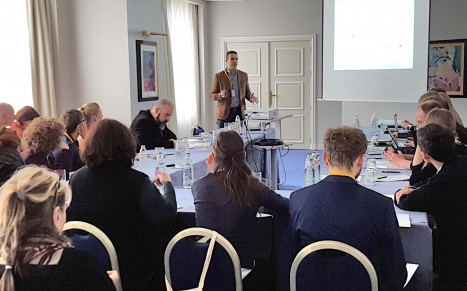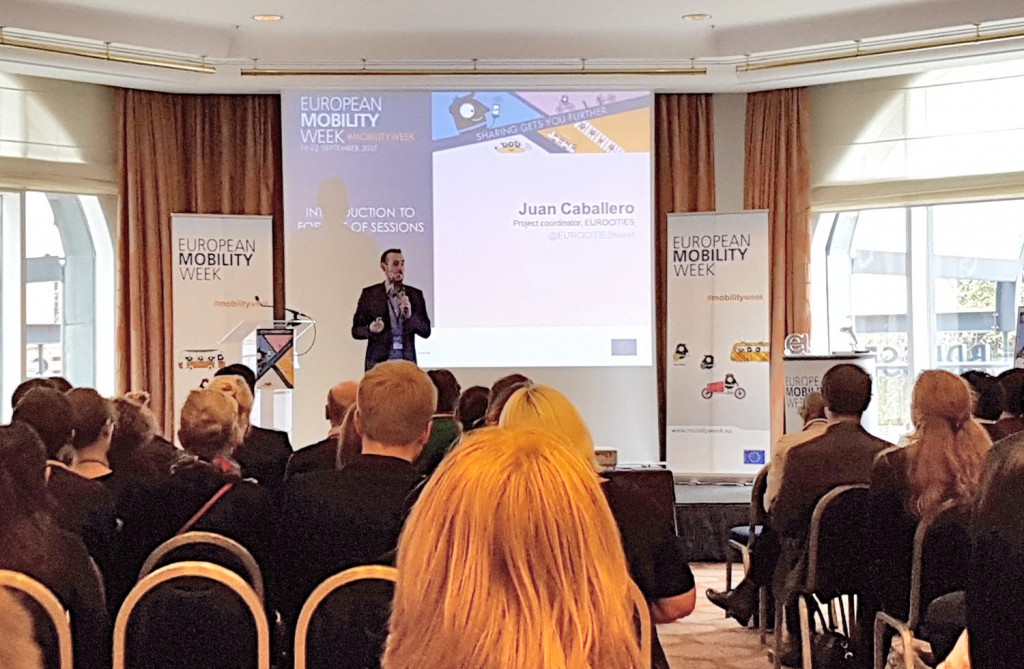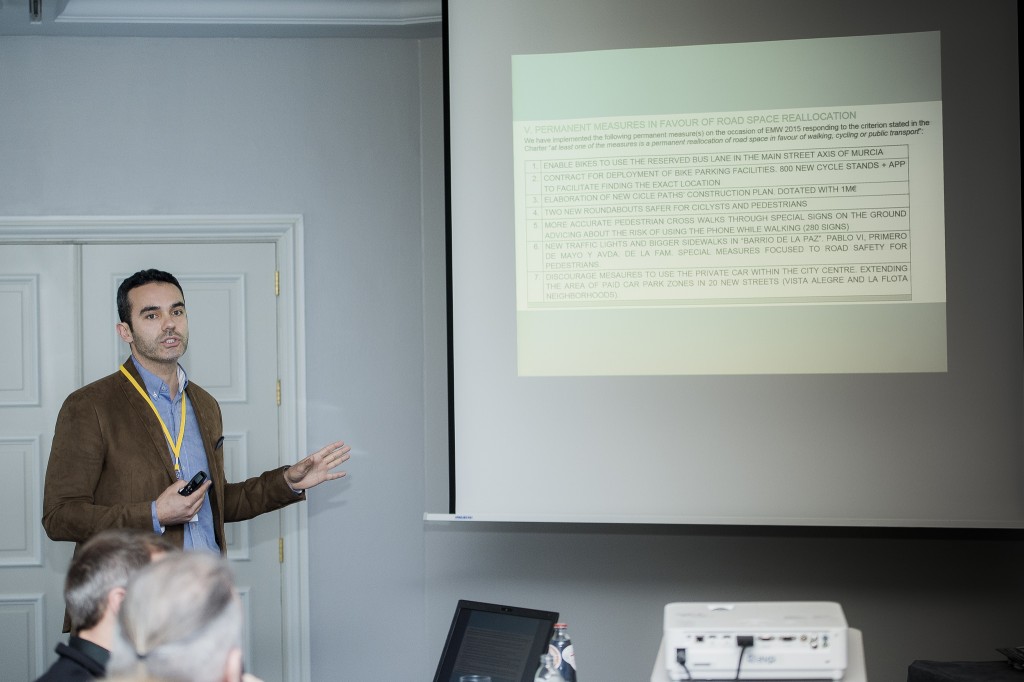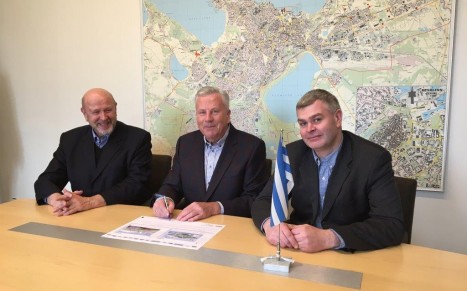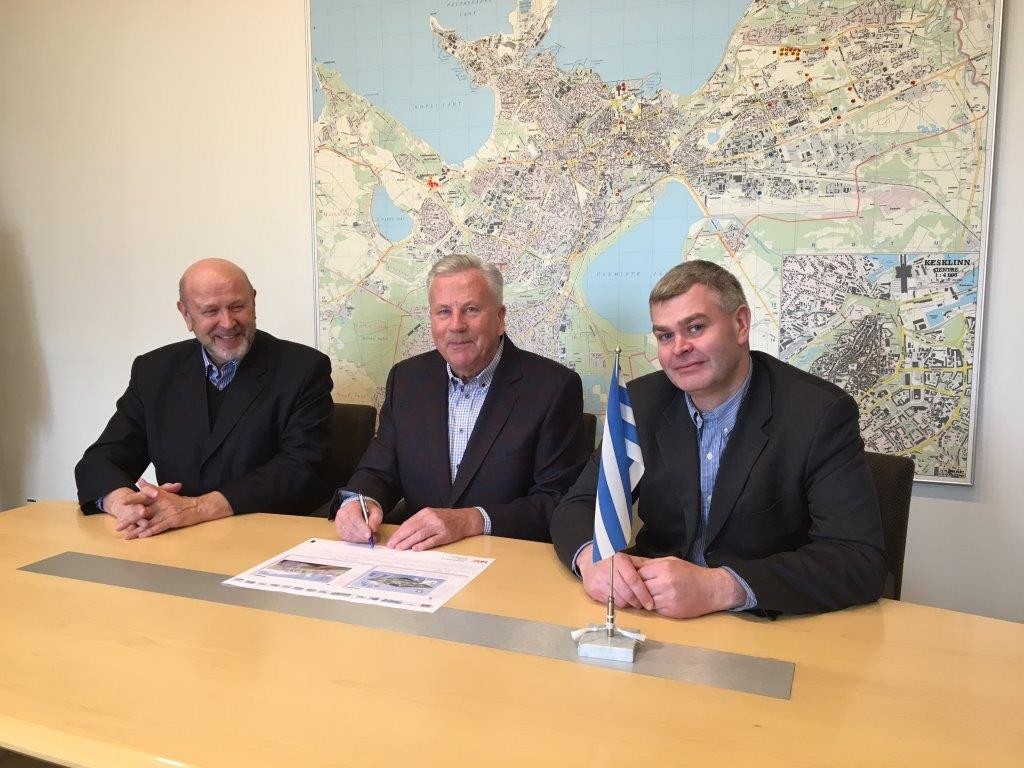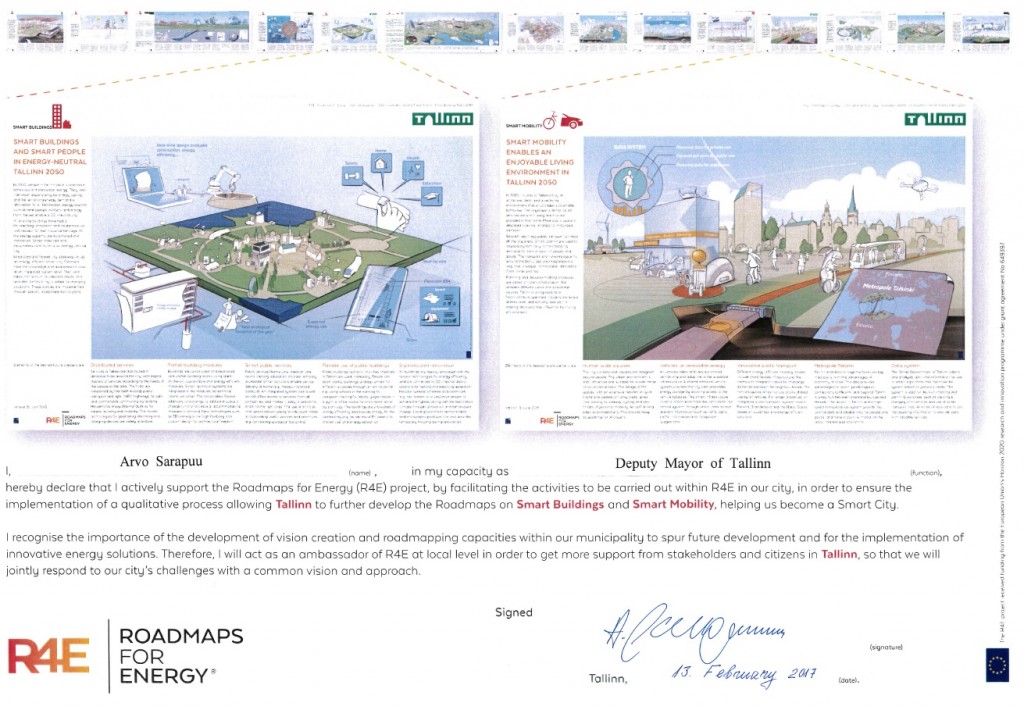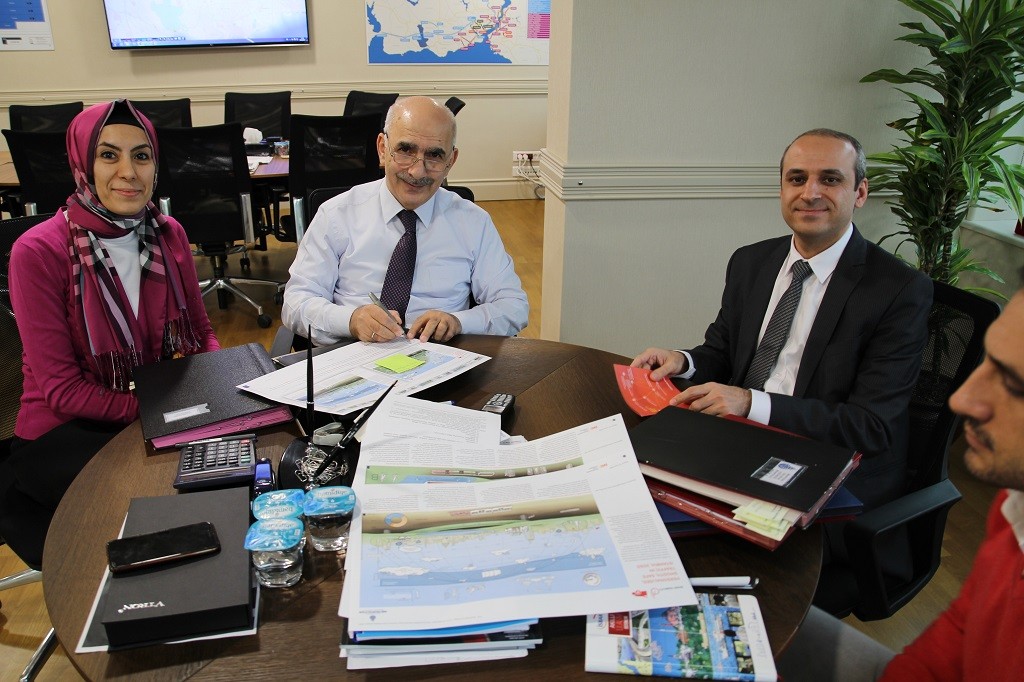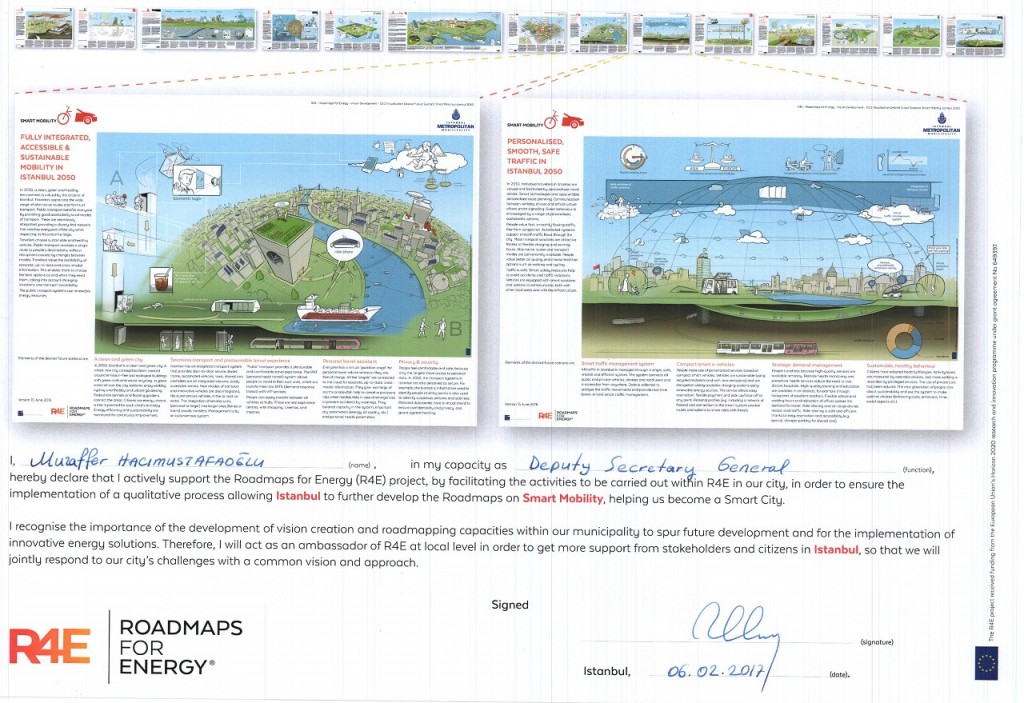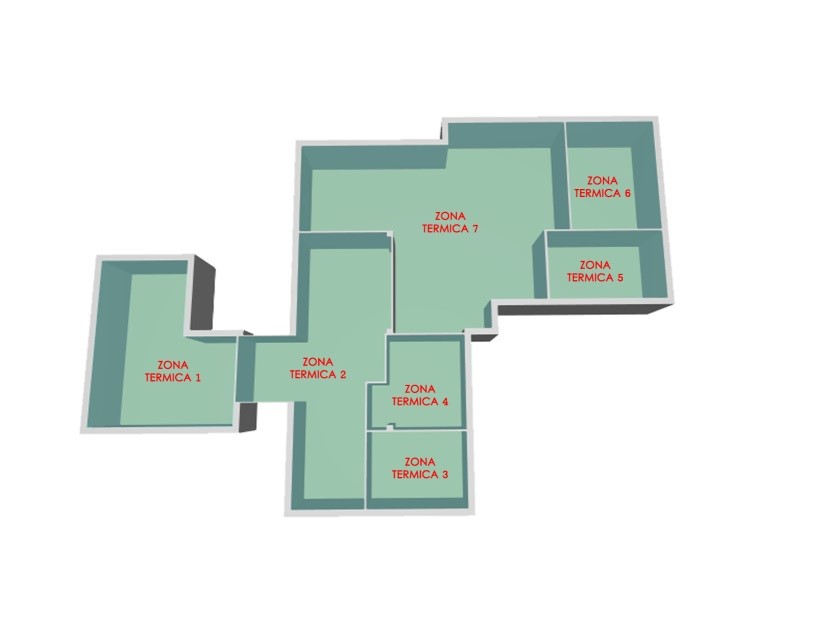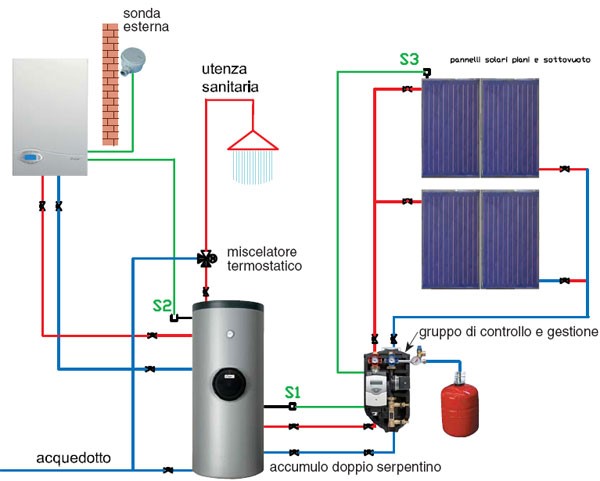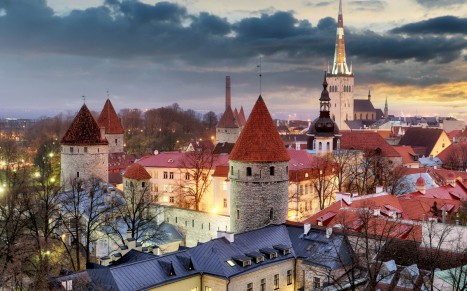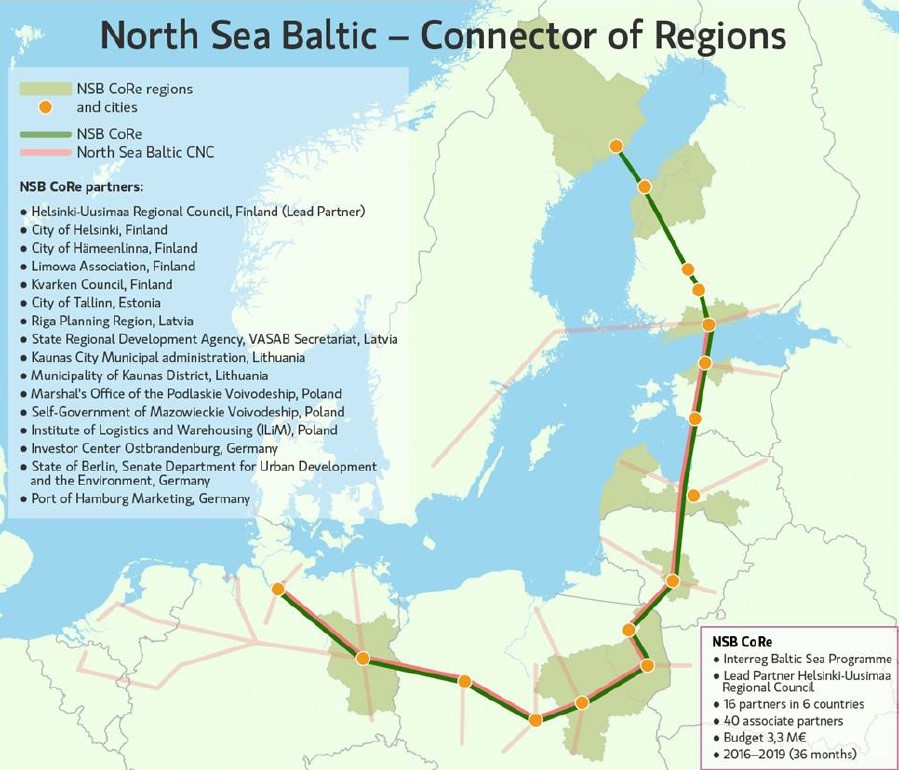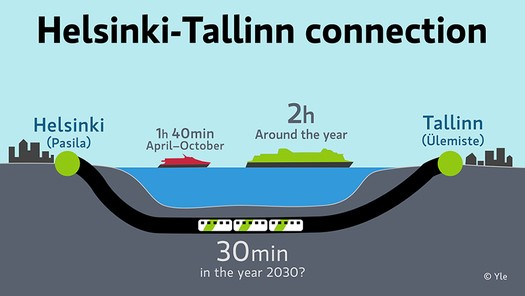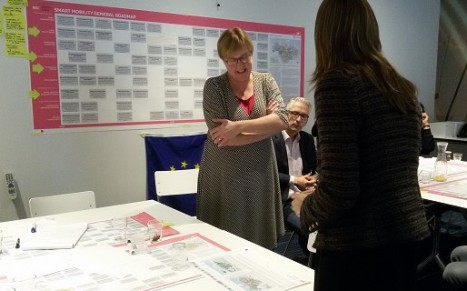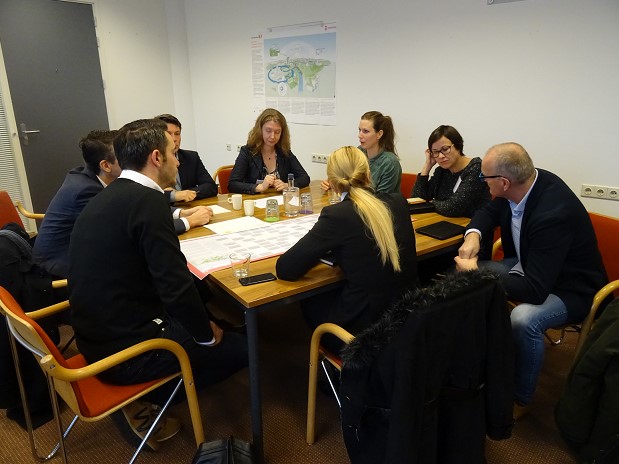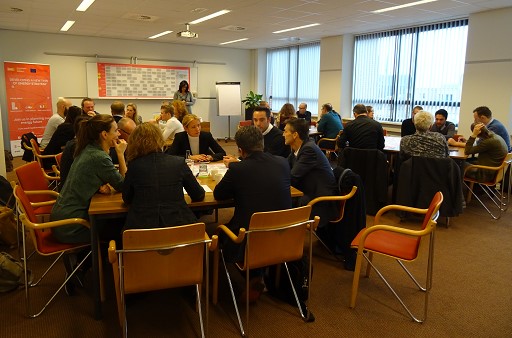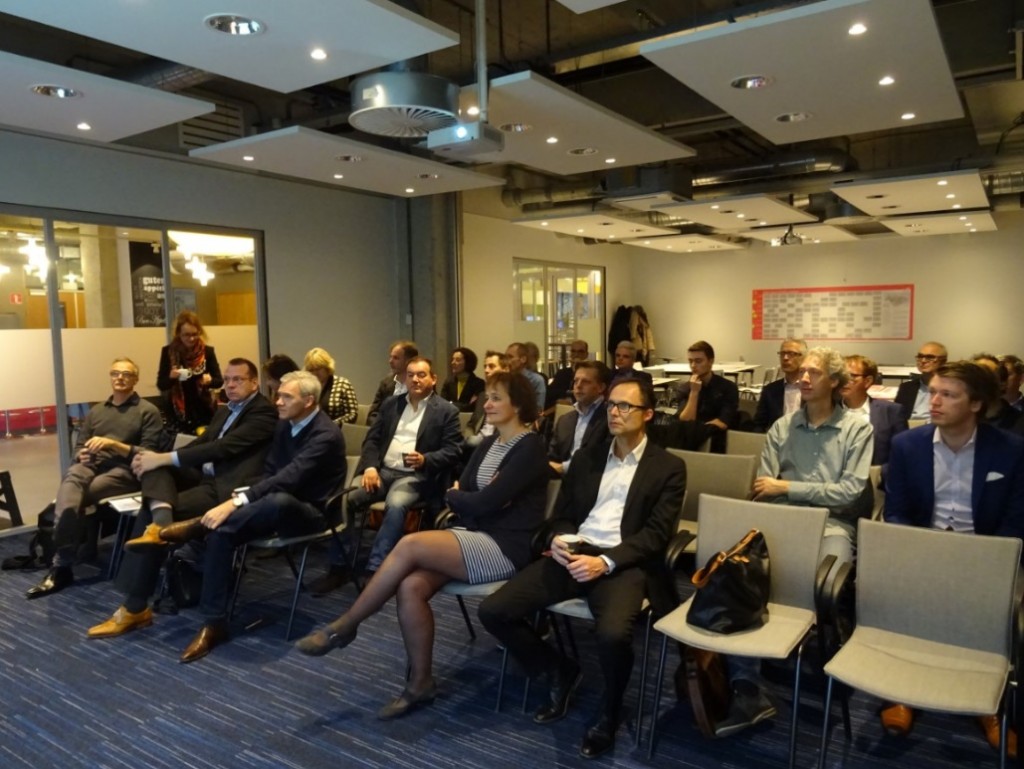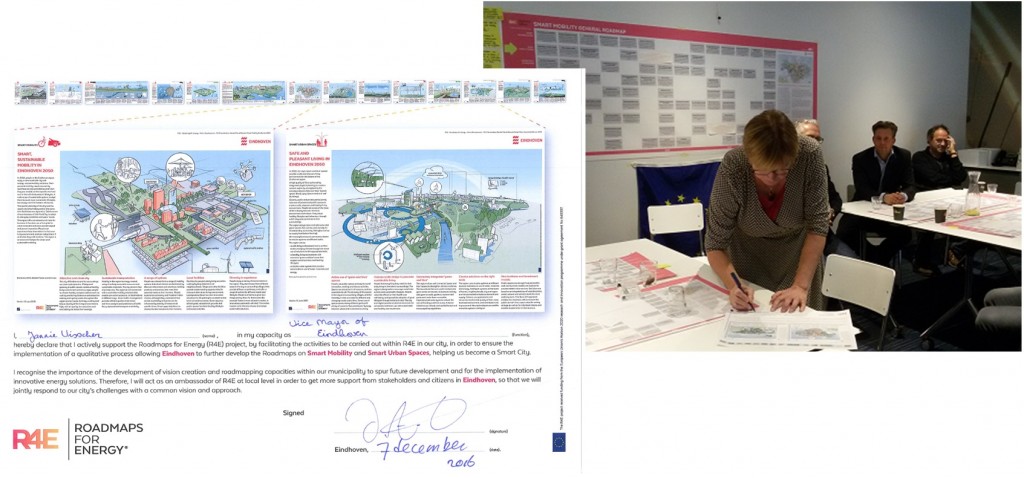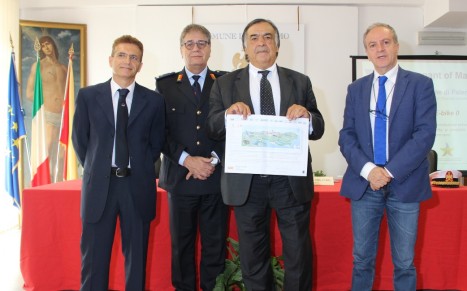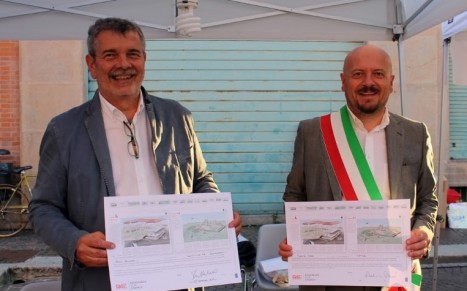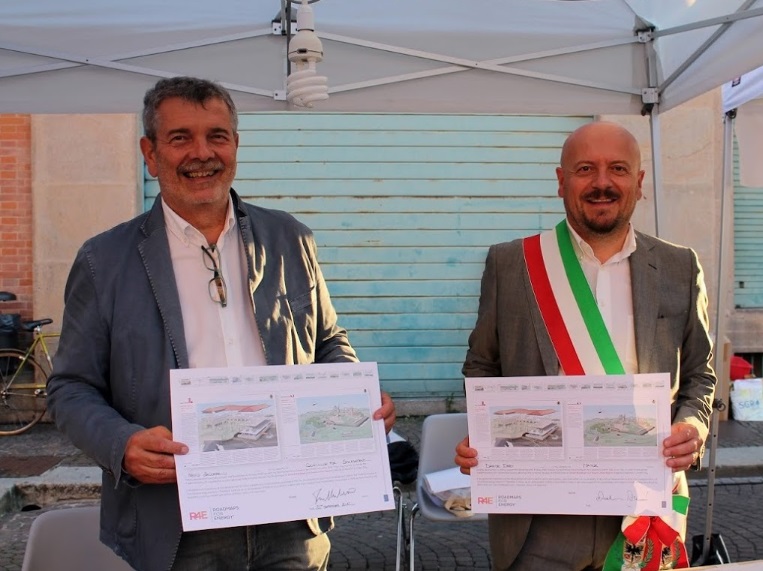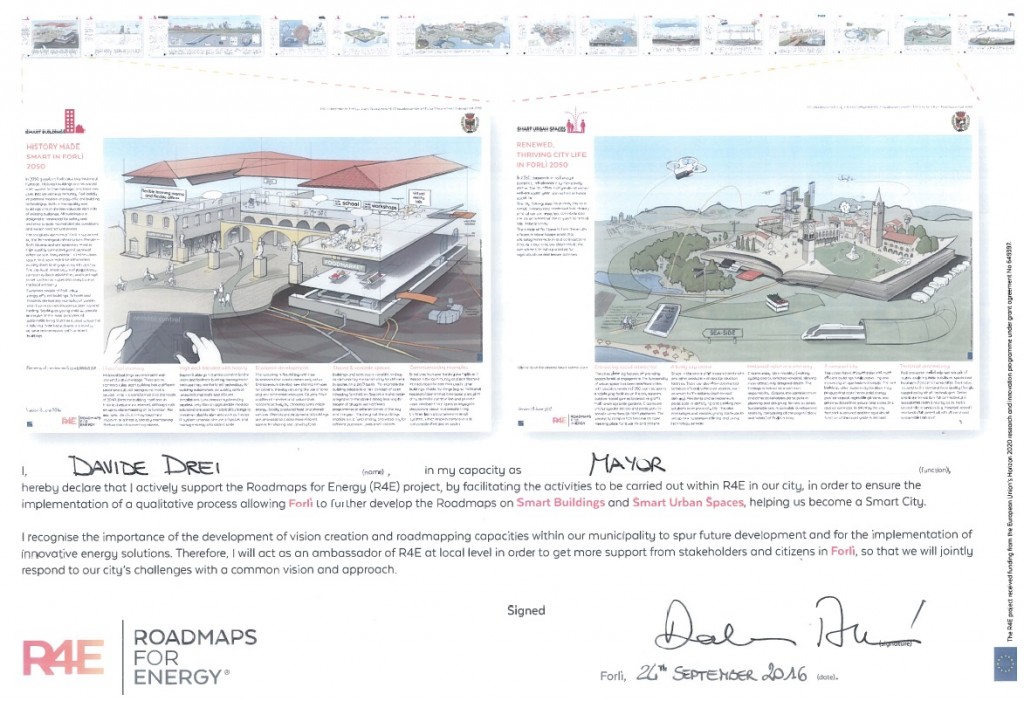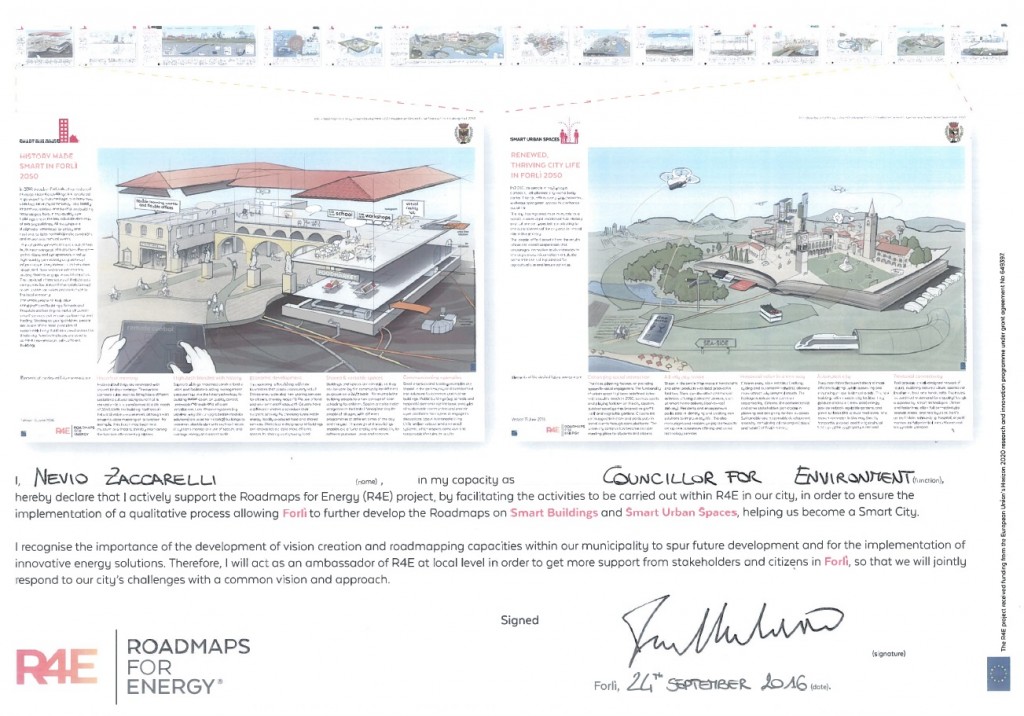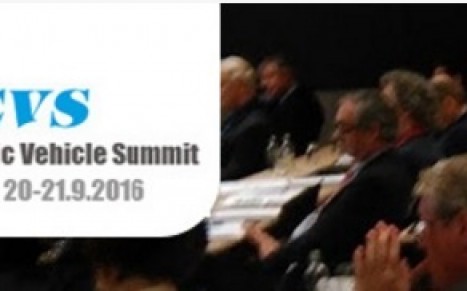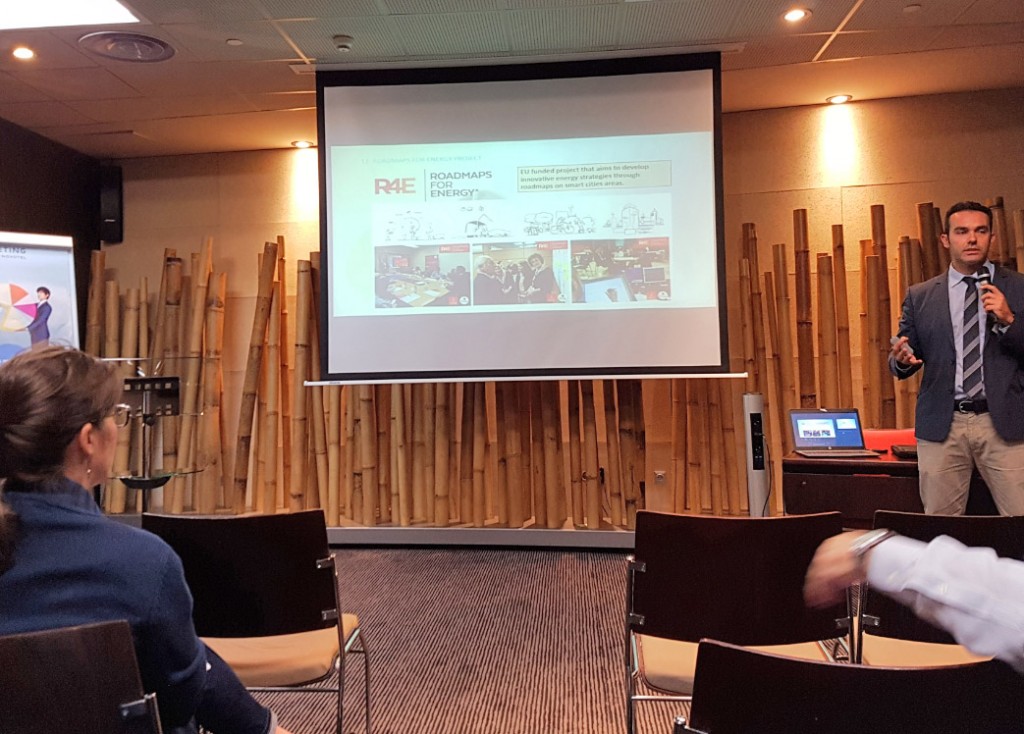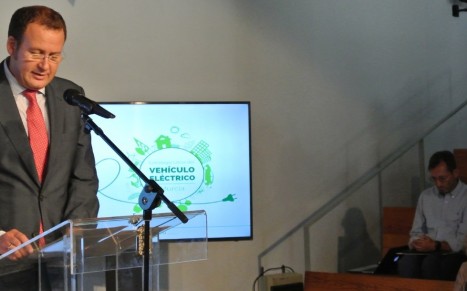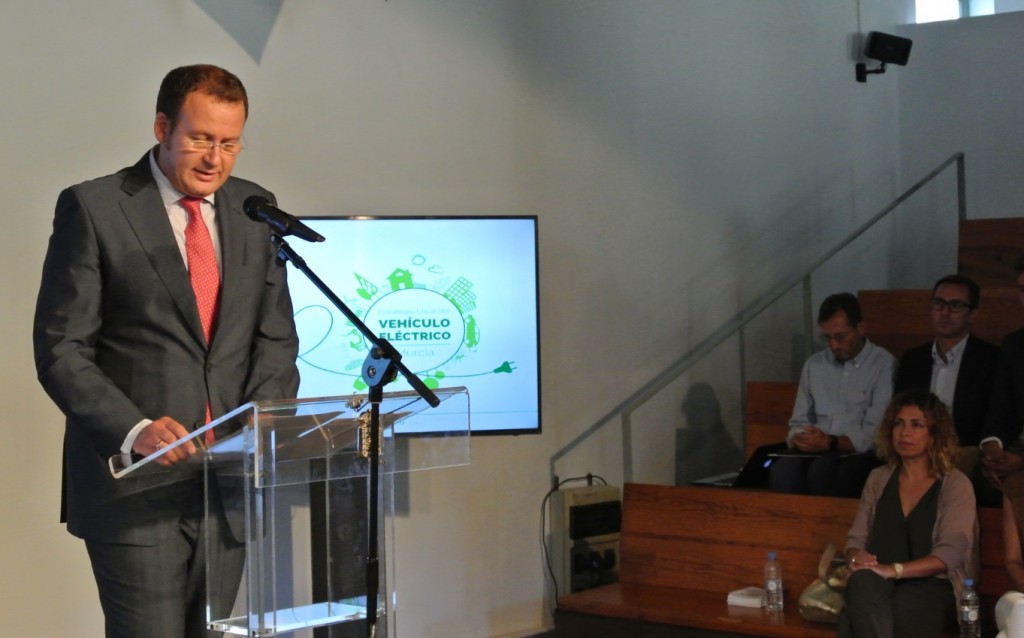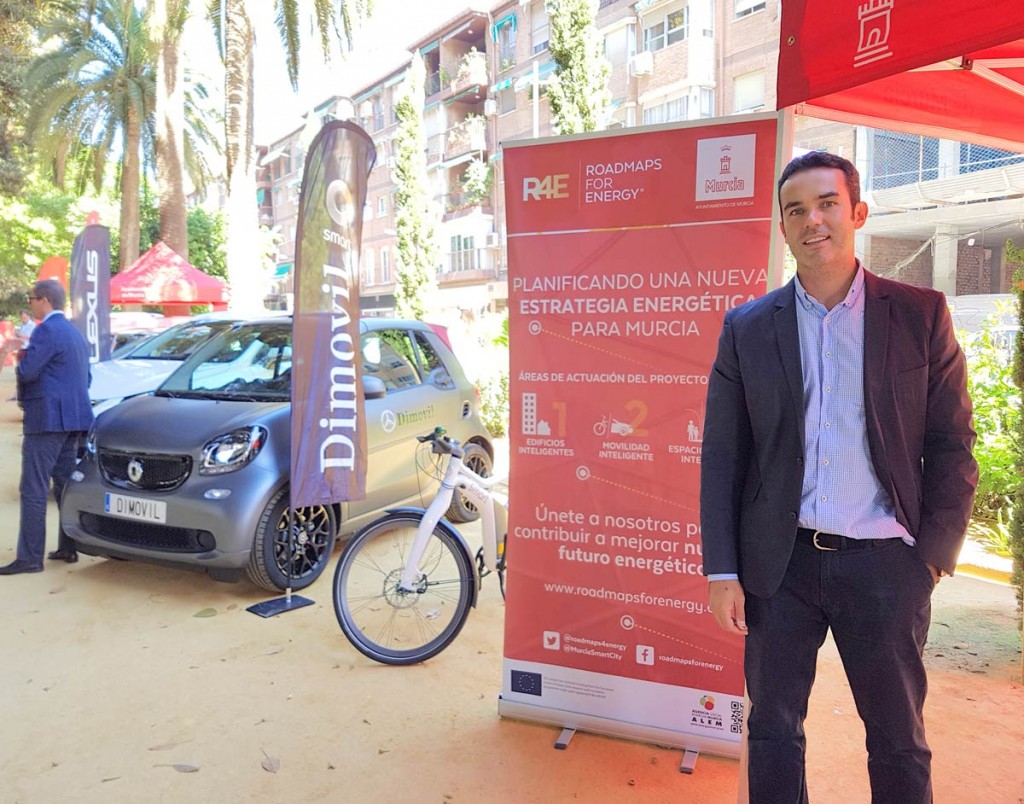Blog : 52s Posts Found
How to organize the European Mobility Week
How to organize the European Mobility Week
On 20 & 21 March 2017, the City of Murcia participated in the workshops of the European Mobility Week Awards 2016 (EMW 2016). ALEM, the Local Energy and Climate Change Agency of the City of Murcia was responsible for sharing with other European cities the experience of the City on how to successfully organize the activities and events of the European Mobility Week. The European Commission engaged Murcia to be present in these workshops to provide advice and explain in detail their wide experience as organizer of the EMW editions. In this way, ALEM showed how they prepared the candidacy of Murcia to the edition of 2015, in which Murcia won the prize amongst more than 800 applications from all over Europe.
ALEM highlighted, among other aspects, the importance of organizing activities that have the citizen as the protagonist and in which people are actively involved. ALEM also pointed out that outdoor activities must be foreseen in order to enable citizens to enjoy the streets and the public space in a different and original way. During that week there are more opportunities for cycling and walking freely and you can enjoy the city in a full way leaving aside the car and the daily limitations.
The events held in the framework of these workshops also were useful to create new collaborative links between the City of Murcia and other European cities that also work intensely to place the sustainable means of transport such as the bicycle, walking or electric vehicle in the position they deserve and to guarantee the required municipal support to make them more relevant in our cities. In this regard, it should be mentioned that the Department of Urbanism and Environment has turned to support sustainable mobility by establishing important milestones such as the construction of 20km of new bike lanes In the city and the support to the electric vehicle, materialized through the creation of the Local Electric Vehicle Strategy to be presented soon.
TALLINN: SIGNED OFFICIAL STATEMENT R4E
Tallinn: Signed official statement R4E
Last 13th February 2017, Tallinn joined to the group of partners who have already signed the official statement of the R4E. There is no doubt this statement is a solid proof through which the city of Tallinn and in this case its deputy mayor of Tallinn Arvo Sarapuu pledges to support all the actions, initiatives and projects that can derive from the roadmaps to be delivered at the end of the R4E project. This commitment is crucial to empower the outcomes of the project and guarantee that the methodology will be fruitful in the long term.
The statement , that is shown below, has been signed by the mentioned representative of the Municipality of Tallinn and it includes the visions of the city for 2050, these visions represent how Tallinn should look like in that ideal scenario that has been designed by Tallinn Municipal experts, their local stakeholders and their policy makers. The visions of Tallinn include all the features, services and characteristics they have considered needed in that ideal future in which Tallinn can provide the highest standards of quality of life to its citizens within this areas.
R4E Statement signed by Arvo Sarapuu, Deputy Mayor of Tallinn
ISTANBUL: Signed official statement R4E
ISTANBUL: Signed official statemet R4E
Roadmaps for Energy (R4E), in which Istanbul Metropolitan Municipality (IMM) is a partner, is an European Union funded project under the Horizon 2020 programme that aims to develop a new type of energy strategy through visions and roadmaps for the 8 partner cities, in co-creation with relevant local stakeholders. The project focuses on three areas (Smart Mobility, Smart Buildings, and Smart Urban Spaces) within the domain of sustainable energy that are closely linked to the municipalities main responsibilities and each city partner has chosen 2 focus areas to work on its roadmaps depending on its objectives.
Official R4E statement signature moment with Mr. Muzaffer Hacımustafaoğlu
On February 6th, an evaluation meeting was held between Istanbul Metropolitan Municipality’s (IMM) European Union Project team and senior managers of IMM who are responsible for transportation related projects carried out by IMM. During the meeting, Smart Transportation Vision of İstanbul in 2050 was also discussed. Detailed information was provided to senior managers about the work areas of IMM in R4E Project and activities completed during the project. Views were exchanged about activities carried out throughout the project cycle and planned works in the project in the field of “Intelligent Mobility” which is selected by IMM as focus areas. Managers were informed about “Smart Public Transportation” and “Smart Traffic Management” plans and activities of IMM within the context of R4E Project.
Istambul’s R4E Statement signed by Mr.Muzaffer Hacımustafaoğlu
At the end of the meeting, The Official Statement was signed by IMM’s Deputy Secretary General Mr. Muzaffer Hacımustafaoğlu who is in charge of deciding transportation projects in Istanbul. By signing “Official Statement”, Mr. Muzaffer Hacımustafaoğlu officially declared his support to R4E Project and stated that he will contribute to smart city studies of the project team. After his signature, R4E project team received top level manager support to R4E Project institutionally. Mr. Muzaffer Hacımustafaoğlu expressed that the works carried out within R4E Project in the field of intelligent mobility will make a significiant contribute to Smart City Vision of İstanbul. He thanked to the project team and explained that his support for such projects will continue as deputy secretary general and expressed his new project expectations from IMM project team.
Energy Certification of the “Poppy” Nursery in Palermo
Energy Certification of the “Poppy” Nursery in PALERMO
The article describes the methodology developed to address the theme of energy efficiency in a municipal building, which is a reproducible example for the entire property estate of Municipality of Palermo. The study was carried out on a kindergarten, recurring type of construction in the municipal building park.
They started from the realization of an energetic diagnosis to the energy certification of the building, in line with the regulations in force in Italy (DM of 26/06/2015), to end with the proposition of interventions of energy efficiency to be realized on the “Poppy” nursery, located in Palermo, in the Borgo Nuovo district.
The study was carried out implementing the methodology described below consisting of the following actions:
- an energy audit that made to understand the “state of the art” of the building, with regard to the constructive features of the “building-construction casing system”;
- determination of primary energy requirements and corresponding CO2 emissions through the use of computerized computational models complying with UNI 11300 national standards issued in implementation of Community Directive 2002/91 / EC, also known as the EPBD Directive (” Energy Performance of Buildings Directive “) and those issued up to now;
- energy certification of the building, culminating in the realization of the first energy plate of a communal building; first case in Palermo and one of the few in the south. This plate shows the energy class of the building and is a distinctive sign of its energy quality;
- drafting of the energy efficiency project of the kindergarten in order to identify possible interventions to bring the building from the current class (C) to the highest efficiency class (A4). The implementation of the proposed interventions would make possible to transform the kindergarten into an almost zero energy building (NZeb). The necessary work, given the achievable energy class, could be realized using the funds provided in the “Thermal Account 2.0”, in force from May 31, 2016.
The building consists of a ground floor building with a total gross floor area of 355.72 m2, a total dispersing surface of 991.85 square meters and therefore with a shape factor equal to 0.59 1 / M. Its structure consists of a flat concrete slab covering, unobstructed masonry walls and a floor made of a lateral concrete slab on the nest. Transparent dispersing surfaces are made up of windows and window doors with a surface of approximately 60 m2, made of metal frames and single glazing with low thermal resistance.
The energy services present are: winter air conditioning, hot water production, summer air conditioning and lighting. The energy sources used are natural gas for winter air conditioning and electricity for hot water production, summer air conditioning and lighting; Part of the latter is satisfied with that one produced by a photovoltaic plant. The heating system consists of a standard base boiler with a nominal power output of 70 kW and steel radiators. The hot water generator consists of 3 electric storage boilers, with a rated load of 1.2 kW each. With regard to lighting, the census of the typologies and the number of light sources has resulted in an installed electric power of 4.32 kW. The cooling system, on the other hand, consists of 6 heat pumps, located in the most frequented environments, with cooling power ranging from 2.1 to 5.3 kW. The photovoltaic system, placed on the roof, has a power of 6 kWp.
Calculations were made for the determination of the non-renewable global energy performance index of EPgl, nn 222.5 (kWh / m²) and of the Global Energy Class, equal to C class.
At the same time, the energy diagnosis, that preceded the start of any energy efficiency project, with the acquisition and consultation of all necessary data, was carried out In order to understand how energy is used in the building and to identify any waste.
In addition to obtaining data on building envelope and air conditioning systems, all electrical equipment (fax, photocopiers, computers, etc.) and lighting fixtures have been registered, together with real energy consumptions, derived from monthly invoices for electricity and natural gas consumptions.
The set of data and information has been used to identify opportunities for building energy efficiency improvements.
The energy auditing phase ended with the analysis of benchmarking index; this comparative benchmarking compares the energy consumption of a building with that one of similar structures, enabling evaluation of opportunities for improvement and quantifying the possibility of obtainable savings.
Subsequently, energy efficiency measures were considered, evaluating both the costs and the energy savings derived. For the choice of interventions, the critical points of the building were taken into consideration, that is, both the wrap elements and technical installations such as winter and summer air conditioning, hot water production and lighting. The following interventions have been suggested:
- Ventilated roofing using wooden fiber insulation panels, modular scantlings (IGLOO) made of 17 cm high plastic material, and on top a screed of lightened concrete with expanded polystyrene, 5 cm thick. This package allows significant energy savings that would bring the thermal transmittance to a value of 0.305 (W / m2K), lower than the legal limit, imposed by the DM. Of 26/06/2015;
- Insulation of external masonry, carried out by applying a coat system with ventilation chimney on the exterior, consisting of a 600 mm expanded polystyrene panel with a drilling system that ensures the ventilation inside the insulator . The transmittance would pass from 1,024 (W / m2K) to 0.382 (W / m2K).
- Replacement of all transparent structures with thermal cut PVC fixtures, Uw = 0,89 (W / m²K), and double glazing with argon in the interspace (type 4-16-4), low emission, with thermal transmittance Ug Ranging from 1.1 to 1.3 (W / m²K).
It is also expected to replace the existing boiler and individual heat pumps with a new air-to-air cooling air conditioning system for cooling and heating, consisting of a 28,00 kW cooling/cooling motor and 31.50 kW in heating and “lowered” canalized internal units for false ceiling installation. The old distribution system will not be taken into account. The plant will be sized to work for over 90% of the time at a load percentage ranging from 30% to 60%. Under these conditions, the motor-condensing unit will have an average COP and EER of more than 6.00 at nominal operating conditions.
Finally, for the needs of domestic hot water, a forced circulation system is foreseen. Consisting of a solar hot water tank with a primary circuit connected to two solar collectors. The energy collected from the solar collectors is sold through a heat exchanger to the water contained in the accumulation, while the circulation of the heat conductor is carried out by means of an electric pump controlled by an electronic control unit. The control unit stops the pump when the collector flow temperature is lower than that in the accumulator (eg during the night). In the days of no solar irradiation, the boiler ensures the supply of energy.
The total cost of the planned interventions is approximately € 86,450.00 and the EPgl index would not exceed 45,3 kWh / m2, in class A4. This value would allow access to the funding contained in the Energy Account Decree 2.0.
The economic evaluation of the energy efficiency measures was carried out by the determination of the return time (TRA), which is 8.3 years.
On our way to Smart Mobility- Tallinn
On our way to Smart Mobility- Tallinn
In 2016 three new projects co-funded by the EU were commenced that will help to further Tallinn’s ambitions in the field of Smart Mobility. These projects are NSB Core (Interreg Baltic Sea Region Programme), FinEstSmartMobility (Interreg Central Baltic Programme) and FinEst Link (Interreg Central Baltic Programme).
NSB Core – North Sea Baltic Connector of Regions – is a project aimed to improve sustainable freight and passenger transport in the north-eastern region of the Baltic Sea. This in turn will ensure a better access to the region via North Sea – Baltic Corridor. The project consortium consists of 16 partners from 6 countries with an impressive number of 40 associated partners. During the project, mapping of different smart mobility concepts as well as spatial analysis for several commuting corridors will be carried out. The project underlines the need to synchronize long distance transport to urban transport systems, such as train, air and sea transport. Additionally a case study for a new tramline in Tallinn to connect the harbour to Tallinn city centre will be conducted. The project will run until 30.04.2019.
FinEstSmartMobility – Old City Harbour mobility flows with smart solutions – is a smaller project with 6 project partners, including the City of Helsinki as the lead partner and City of Vantaa. The objective here is to create an interactive queue management system for heavy good vehicles (HGV) arriving in the ports of Tallinn and Helsinki. A pilot project will be implemented in Tallinn in which a parking lot outside the city centre will serve as the parking area for heavy vehicles in the queuing system. The trucks are directed to the harbour according to real-time traffic conditions and ferry timetables, which reduces parking load in the port area. The project also sees the extension of the Park & Ride scheme to the ferry passengers in order to reduce car traffic in the city centre and the harbour area. An important result will be the Sustainable Urban Mobility Plan for Tallinn that will be developed within this project. The project ends on 31.08.2019.
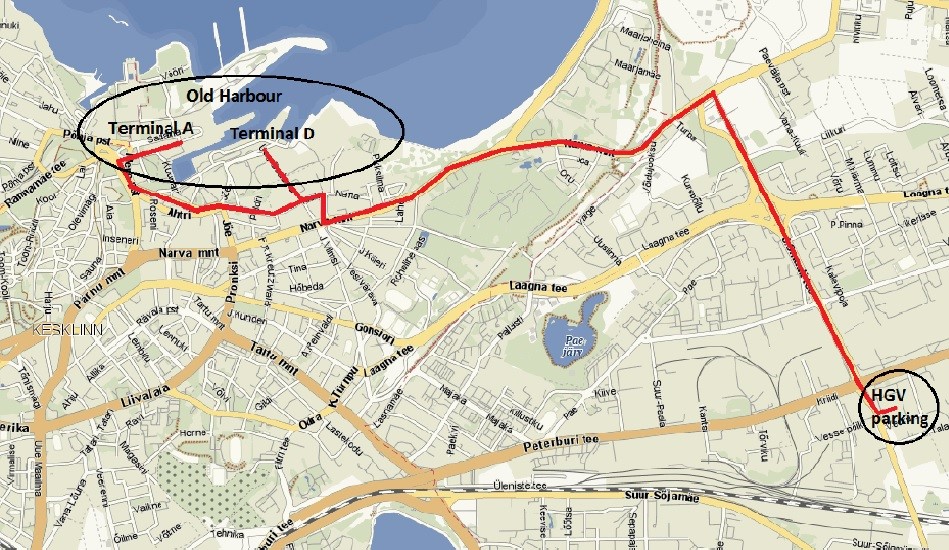 Location of the HGV parking lot
Location of the HGV parking lot
FinEst Link – Finnish Estonian Transport Link – carries out a feasibility study of the Helsinki–Tallinn fixed link in 2016–2018. The feasibility study focuses on the technical, economic and business viability of the railway tunnel vision. There are 6 partners participating in the project, including the City of Helsinki. The project also helps to pave the way for deeper integration of regional economies, twin-city and regional co-operation, and for achieving better integration in the multimodal cross-border transport systems with significant impact on lowering the CO2 emissions. The project runs until 31.07.2018
Roadmap Workshops in Eindhoven and R4E support of Vice-Mayor
Roadmap Worshops in Eindhoven and R4E support of Vice-Mayor
On 1 and 7 December 2016, the first two R4E Roadmap Workshops took place in Eindhoven. The aim of these workshops was to complete the city specific roadmaps of Eindhoven on Smart urban spaces and on Smart mobility, by defining projects which are needed in order to bring these roadmaps to the next level. Participants of the workshops were civil servants and external stakeholders who can help in the realisation of the defined projects and/or have the specific knowledge of solutions that can help in the realisation of those projects.
While preparing the workshop the R4E team of Eindhoven realised that a lot will change in the coming years. All kinds of changes, like climate change, the transition to non-fossile fuels, demography, technology, etc., will have an impact on many elements, like on public space, mobility, and on the behaviour of travellers in choosing their mode of transport. Very important about all these changes is that they won’t take place at the same time and that we cannot foresee it if and when they will occur. This means that the design of the urban space and the space for transport as an integrated part of public space has to be flexible.
Roadmap Workshop Smart urban spaces
On the 1st of December 2016 the first Roadmap workshop of R4E took place in Eindhoven, focusing on Smart urban spaces. The “Street of the future”, a result of the changes that will take place in the future, was chosen as an inspirational image during the workshop. From the enthusiastic reactions of the workshop participants we can conclude that this image was a good choice.
During the workshop several projects and subjects were determined as key success factors in the transition to the “Street of the future”. The available space in the subsurface was mentioned as one of the challenges for now and the future. Furthermore, greening the city is one of the solutions in order to cope with a changing climate, as well as making the city more liveable. Another important outcome is the need to create a climate resilient kit. This kit should help to make people aware of climate change and show them what they can do to make their property more resilient.
Roadmap Workshop Smart mobility
On the 7th of December 2016, the Roadmap workshop on Smart mobility was organised in Eindhoven. From the work done within R4E in the past months resulted in the desired future scenarios and shared values for Smart and Sustainable mobility in Eindhoven, which are a healthy city and region, a liveable environment, and putting the traveller at the center of the proposed solutions. This was taken as starting point for the Roadmap Worshop.
About 35 representatives from knowledge institutions, companies, groups of interest, and local, regional and national government participated actively at the workshop in four working groups:
- Shared Smart Mobility modes
- Data & management systems
- Personalised services
- Values, motives and behavioural change
Also here, the key success factors were determined for the transition of the future region and city of Eindhoven. One of the main challenges ideantified, for now and in the future, is the quality of the available space.
Signature of the ‘Offical Statement’ by Vice-Mayor
At the end of the workshop the Vice-Mayor for Mobility, Mrs. Jannie Visscher, reflected on the results of the workshop. She noticed with enthusiasm that the participants in the triple helix are very willing to cooperate in making a next effective step in realising the ambitions and solving mobility problems. She signed the ‘Official Statement’ of the R4E project, thereby expressing her support of the roadmapping process and the R4E project in general.
The next step…
During these workshops we made a first step by collecting project ideas and initiatives to start the actual work in order to reach the desired furture scenarios. At the end, this will flow over into the following phase of the R4E project: the Project Portfolio.
PALERMO: SIGNED OFFICIAL STATEMENT R4E + European Week of Sustainable Mobility
Palermo: Roadmaps for Energy during the European Week of Sustainable Mobility
From 16 to 22 September 2016, it was also the “European Sustainable Mobility Week” in Palermo, during which the Municipality of Palermo, together with the city’s environmental association, organised several events to raise awareness of the use of public transport and, in general, the use of means of transport with low or zero C02 emissions, called E-BIKE 0.
In order to add further substance to the initiative, the Mayor Leoluca Orlando has inaugurated an innovative “home-work place” mobility system, consisting in the use of electric bicycles and included in the charter of intent for the “Roadmaps for Energy” Project. In fact, the Palermo project includes a vision of the city in 2050, with particular reference to sustainable mobility and energy efficiency. The signing of the letter of intent demonstrates the particular importance participation in the European project has for Palermo.
The event was also attended by the Deputy Mayor for Energy and Technological Innovation, Prof. Gianfranco Rizzo, the Chief of the Municipal Police, Dott. Vincenzo Messina, and Eng. Antonio Mazzon, Manager of “Roadmaps for Energy” project, who explained the technical details of the initiative.
The E-BIKE 0 is part of a program financed by the Ministry for the trial by the Italian municipalities of a pedal assisted prototype bicycle with high efficiency and zero emissions. The project is the identification of three automated racks around the city that allow the charging of 30 electric bicycles, tracking the distance travelled and the pollutant concentrations measured during the moving around the city.
Volunteers were selected previously, a sample of employees that includes 10 members of the Municipal Police, through an online survey, made with a special web-based application. People were selected based on their willingness to abandon the use of their car to travel to their workplace and use the electric bicycle instead. In addition, the automated racks have been installed in public buildings with closed garages to ensure the safety of the bicycles and shelter them from the weather and secure the electronic equipment in the data monitoring system.
Palermo participates in a research project for the development of sustainable mobility, the identification of people’s behaviour during their commute and the struggle against pollution and emission of greenhouse gases. After one year of testing a report will be prepared in every participating Italian city which will be published with all data concerning not only environmental benefits, but also the barriers for a large scale implementation of this system of sustainable mobility.
The initiative falls within the provisions of the Project “Roadmaps for Energy” and will be included in the “portfolio” of projects for Palermo 2050 – “Social and Cultural Harbour”.
FORLI: SIGNED OFFICIAL STATEMENT R4E
Forli: Signed official statement R4E
Last 24th September 2016, Forli joined to the group of partners who have already signed the official statement of the R4E. This statement is a solid proof through which the city of Forli and in this case its Mayor, Davide Drei and its Councillor for the environment Nevio Zaccarelli, pledge themselves to support all the actions, initiatives and projects that can derive from the roadmaps to be delivered at the end of the R4E project. This commitment is crucial to empower the outcomes of the project and guarantee that the methodology will be fruitful in the long term.
The statement , that is shown below, has been signed by the mentioned representatives of the Municipality of Forli and it includes the visions of the city for 2050, these visions represent how Forli should look like in that ideal scenario that has been designed by Forli Municipal experts, their local stakeholders and their policy makers. The visions of Forli include all the features, services and characteristics they have considered needed in that ideal future in which Forli can provide the highest standards of quality of life to its citizens within this areas.
R4E Statement signed by Davide Drei, Mayor of Forli
R4E Statement signed by Nevio Zaccarelli, Councillor for the Environment of Forli
Murcia, present at the first international summit on light electric vehicles
Murcia, present at the first international summit on light electric vehicles
The presentation has elaborated on issues such as the experience Murcia has acquired in the European project “Electra” and the recent “Local Strategy for Electric Vehicles”.Murcia has been selected to present its experience and the work it has been doing in the last years relating to the field of electric mobility at the first summit on light electric vehicles that was held in Barcelona on the 21st and 22nd of September.
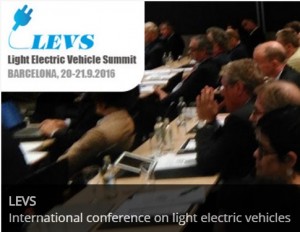 It was an international event, where professionals and entities from around the world involved in electric mobility gathered, and where the latest projects and performance of the sector were presented.
It was an international event, where professionals and entities from around the world involved in electric mobility gathered, and where the latest projects and performance of the sector were presented.
ALEM, the Local Energy Agency from the “Department of Modernization of the Public Administration, Urban Quality and Citizen Participation”, in their presentation held at this meeting, offered a review of the current situation in cities that, like Murcia, are convinced of the need for a strong political support and backing for the electric vehicle and electrical vehicle initiatives, as was fervently highlighted by councilman Jose Guillen.
The presentation highlighted issues like Murcia´s experience in the European project “Electra” which has aimed to promote innovative loan structures of electric motorcycles, as well as the recent Local Strategy for the Electric Vehicle in Murcia, an open participatory process where citizens can directly participate in the process.
The specific actions and projects the City of Murcia is working on and with, also include the European Project “Roadmaps for Energy” a project that focuses on creating roadmaps to undertake innovative actions in Smart City areas such as smart mobility, intelligent buildings and smart urban spaces.
“Murcia’s direct involvement in important communication and dissemination activities of the R4E project, we show our strong commitment on a local level, to project the City of Murcia, it’s actions and performance in sustainability, beyond the borders of our municipality. “The presence of Murcia in this event is to create and strengthen collaborative relations with other cities, agencies and institutions involved in electric mobility with which the city of Murcia can create synergies in this field” explained councilmember Guillen.
Murcia designs its local strategy to promote the use of electric vehicles
Murcia designs its local strategy to promote the use of electric vehicles
The “Local Strategy for the use of Electric Vehicles”, is a set of initial proposals to encourage and benefit users of this type of vehicles such as tax reductions, exemption from parking fees, or reserving exclusive parking spaces, among others. The City Council wants to give a significant impulse to sustainable mobility in the city and has designed a local strategy to encourage the use of electric vehicles in Murcia, a fundamental step in the process of converting and converging towards a Smart City model.
The “Department of Modernization of the Public Administration, Urban Quality and Citizen Participation”, through their Local Energy Agency ALEM, has been responsible for the development of this “roadmap” which sets out the main outline of actions that will be undertaken and developed by the City Council in the field of promotion, advancement and support to electric mobility.
Councilmember José Guillen presented the local strategy to entrepreneurs of the mobility sector, representatives of public car parks, car rental companies and car repair shops, who “more than anyone else, know and understand the state of their industry”. Thus, the participatory process that “seeks consensus and social support” was initiated, “because the contribution of many enrich the proposal and make it more realistic, feasible and viable, without losing sight of the objective we seek: to promote electric mobility in Murcia.”
The document defines and develops various outlines of action to be implemented in the field of electric mobility in Murcia over the next three years (2017-2019), in order to, with the required institutional support, culminate the process of transformation and progressive adaptation to electric mobility in the municipality.
A set of concrete measures
The proposals that will be further developed under the roadmap of this new strategy to promote the use of electric vehicles are divided into five areas: 1) information and public awareness, 2) promotion and development of electric mobility, 3) infrastructure development associated to electric vehicle incentives, 4) citizen participation, and 5) agents related to sustainable mobility.
Some of the measures included in the strategy are:
- Informative Campaigns to inform and educate the public on electric vehicles.
- MiMurcia will display real-time data and information on the use of the electric charging infrastructure in public roads.
- Cooperation agreements with public car parks and service stations.
- Special timetables in loading and unloading areas for electric vehicles.
- The creation of an Electric Mobility Center for Local Commerce, coordinated by ALEM, to inform, promote and encourage progress in this sector.
- Granting preferential treatment and reserve parking spaces in neighbourhoods and districts, as well as special times for loading and unloading is designated areas, supporting measures for goods distribution and increased traffic.
- Assess the feasibility of introducing electric buses in public transportation fleets.
- Measures to facilitate the creation of electric charging infrastructure in public car parks, residential buildings and areas with communities.
- The creation of a workgroup with service stations and representatives of the Murcia Autonomous Community to introduce electric charging points in service stations at a large scale or implementing independent charging stations.
- Installing charging points or stations in Municipality buildings where possible providing coverage.
- Designing a network of electric charging points and reserved parking spaces favouring the intermodality of transit with the tram, bus lines and MUyBICI stations.
- Evaluate the approval of tax reductions in vehicle tax, parking fees, etc. as well as the licenses for 100% electric taxis.
Although these are initial proposals included in the preliminary document, the idea is to open debate and add other measures “which is expected to happen with the participatory process we have opened today” said José Guillen, who encouraged Murcia’s citizens to join their opinions to this project in order to provide us with “the desired conditions for the electric vehicle to form part of our urban landscape and the sustainable mobility in the municipality”.
The charging network hand in hand with the MUyBICI project
An essential requisite for achieving this goal is the creation of a network of recharging points broad enough to ensure users of electric vehicles can access them if necessary, for which the infrastructure created by MUyBICI could be used. Similarly, the city of Murcia is intensifying its commitment to gradually transform its fleet of vehicles into electrical vehicles, providing the municipal buildings with charging infrastructure, and favouring service subcontracts that foresee and increment their use.
——————————————————–
The document DRAFT OF THE LOCAL STRATEGY FOR THE USE OF ELECTRIC VEHICLES can be downloaded via this link.
The document A BACKGROUND OF ELECTRIC MOBILITY IN THE MUNICIPALITY OF MURCIA can be downloaded via this link.
——————————————————–
The participatory process: make suggestions and help us improve
Once the document of the municipal strategy draft has been presented and published, a broad participatory process opens in which the proposals of the public will be analysed and together with other suggestions made to improve the final plan, will be incorporated by experts.
Social agents related to sustainable mobility, but also Murcian society, any individual murcian, can add new initiatives and innovative actions if they meet the needs identified by each sector. Thus, Guillén adds, “we obtain a consensus on the appropriate roadmap by enriching as much as possible our strategy.” To achieve our goal, collaboration with companies from the sector is combined with the political commitment, and citizen participation are essential elements to ensure success.
The goal is to have a final version of the local strategy before the end of the year, and October will be reserved to study the contributions made leaving November for analysis and decision making.
According to the Councilmember for Modernization, José Guillén, upon completion of the review process with the elements of participation and contribution to the Local Strategy for the Electric Vehicle, the city will be ready to “set a new pace in the race for sustainability and the use of public transport that does not generate CO2 emissions “, which allow our citizens to “enjoy a cleaner and healthier Murcia, improving the quality of life through smart mobility”.
Exhibition of electric vehicles
After the presentation of the strategy, there was a display of electric and hybrid vehicles at the Floridablanca Garden which featured the latest models available. This event helped strengthen relations between City Hall and local stakeholders in the field of electric mobility and who have had a notable presence in the European R4E project (roadmaps for energy), therefore some of the available results were shared in the project and the dialogue and exchange of views with stakeholders as well as citizens who came to the exhibition. ALEM took the opportunity to emphasize the influence that the participation of Murcia in the R4E project has had in the drafting and development of the local strategy for the electric vehicle and its relation to the future of intelligent mobility in the city of Murcia.
